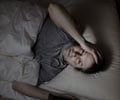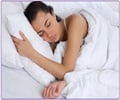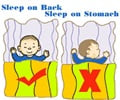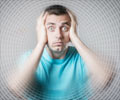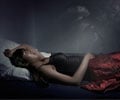Treatment
Treatment of Narcolepsy consists of treating the symptoms with medications and lifestyle alterations.
Drug therapy For Excessive Day time Sleepiness
Narcolepsy has no permanent cure. But the most disabling symptoms of the disorder which are Excessive Daytime Sleepiness and Cataplexy can be controlled, in most patients, with drug therapy. The treatment regimen can be tailored to an individual’s lifestyle needs as symptoms change.
Amphetamines such as methylphenidate, dextroamphetamine, methamphetamine, and pemoline are given to help with sleepiness and reduce the incidence of sleep attacks. These medicines promote alertness during the daytime by reducing the urges to fall asleep.
Some patients may experience side effects like irritability and nervousness, stomach upsets, loss of appetite, insomnia, tremors and disturbances in heart rhythm, there is also potential for addiction to the drug.
Modafinil is a newer drug that has lesser side effects than amphetamines and is equally effective. Some patients on the drug may experience headache when on the drug.
Treatment of Cataplexy and Hallucinations
Drug treatment of narcolepsy's symptoms such as cataplexy, hallucinations, and sleep paralysis is achieved by using the following drugs.
Imipramine or Chlorimimipramine, which belong to the class of tricyclic antidepressants, are known to help with sub symptoms of narcolepsy. Patients may experience better control over their symptoms within two days of taking the medicine.
Some of the side effects experienced by patients could be perspiration, blurred vision and dry mouth.
Selective Serotonin Reuptake Inhibitors (SSRI), such as fluoxetine (Prozac), is known to be especially helpful in the treatment of cataplexy in reducing the regularity of sleep attacks. Poor sleep hygiene aggravates the cataplexy symptoms , therefore establishing proper sleep hygiene may help control the condition.
Sodium oxybate (Xyrem) or Gamma Hydroxybutyrate (GHB) is good to control sleep paralysis, cataplexy, and hallucinations. Sodium oxybate assists with night sleep problems and when administered in high doses also help with day time sleepiness. But this drug is not without side effects. Some patients are unable to breathe properly and have allied problems associated with sleep, for instance bedwetting and sleep walking.
Medications to treat narcolepsy can help reduce the signs and symptoms, but they cannot be totally eradicated.
No medication is currently available that enables people with narcolepsy to consistently maintain a normal state of alertness. Hence drug therapy should be supplemented by various behavioral strategies according to the needs of the individual patient.
BEHAVIORAL STRATEGIES
Lifestyle modifications such as scheduled naps, doing work when most alert, exercises, and avoiding alcohol, coffee and cigarettes before bedtime can help control symptoms of Narcolepsy.
These lifestyle modifications are effective in the treatment of narcolepsy and help to gain greater control over the symptoms.
- Patients are advised to take short, regularly scheduled naps on the days when they have irresistible urge to fall asleep.
- Adults and children alike should perform their most demanding tasks when they are most alert.
- Improving the quality of nighttime sleep can combat daytine sleepiness and help relieve persistent feelings of fatigue. Strict adherence to sleep hygiene measures is required.
- Stimulants such as:
- Alcohol
- Caffeine – coffee
- Nicotine-cigarettes
- Should be avoided for several hours before bedtime.
- The benefit of exercise is far-reaching for such patients. Even a 20-minute exercise regime helps in minimizing sleep attacks, promotes better sleep during nights and keeps a check on weight.




